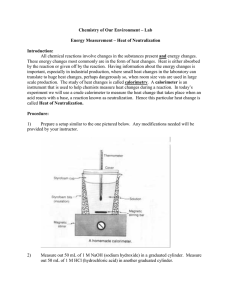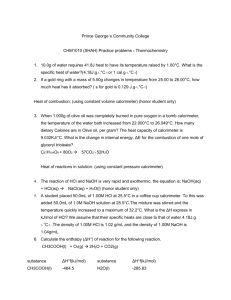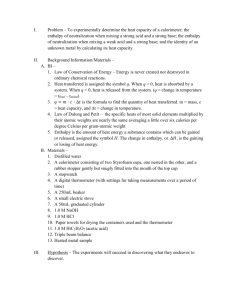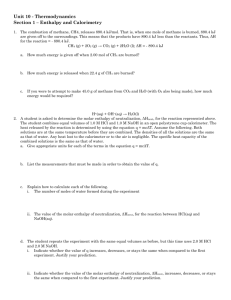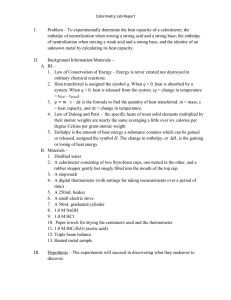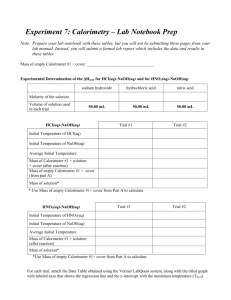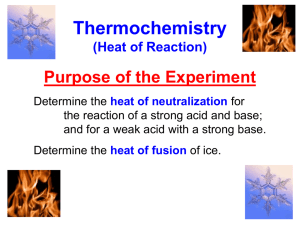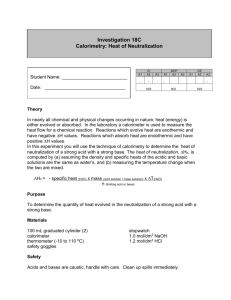Heat of Neutralization
advertisement
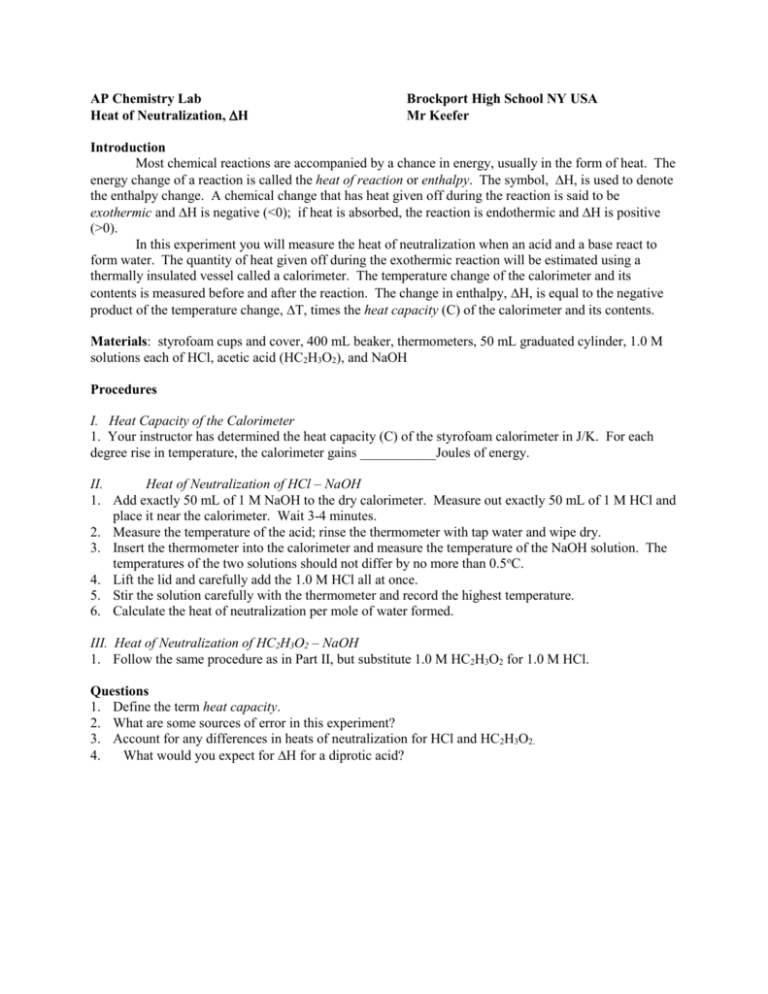
AP Chemistry Lab Heat of Neutralization, H Brockport High School NY USA Mr Keefer Introduction Most chemical reactions are accompanied by a chance in energy, usually in the form of heat. The energy change of a reaction is called the heat of reaction or enthalpy. The symbol, H, is used to denote the enthalpy change. A chemical change that has heat given off during the reaction is said to be exothermic and H is negative (<0); if heat is absorbed, the reaction is endothermic and H is positive (>0). In this experiment you will measure the heat of neutralization when an acid and a base react to form water. The quantity of heat given off during the exothermic reaction will be estimated using a thermally insulated vessel called a calorimeter. The temperature change of the calorimeter and its contents is measured before and after the reaction. The change in enthalpy, H, is equal to the negative product of the temperature change, T, times the heat capacity (C) of the calorimeter and its contents. Materials: styrofoam cups and cover, 400 mL beaker, thermometers, 50 mL graduated cylinder, 1.0 M solutions each of HCl, acetic acid (HC2H3O2), and NaOH Procedures I. Heat Capacity of the Calorimeter 1. Your instructor has determined the heat capacity (C) of the styrofoam calorimeter in J/K. For each degree rise in temperature, the calorimeter gains ___________Joules of energy. II. Heat of Neutralization of HCl – NaOH 1. Add exactly 50 mL of 1 M NaOH to the dry calorimeter. Measure out exactly 50 mL of 1 M HCl and place it near the calorimeter. Wait 3-4 minutes. 2. Measure the temperature of the acid; rinse the thermometer with tap water and wipe dry. 3. Insert the thermometer into the calorimeter and measure the temperature of the NaOH solution. The temperatures of the two solutions should not differ by no more than 0.5oC. 4. Lift the lid and carefully add the 1.0 M HCl all at once. 5. Stir the solution carefully with the thermometer and record the highest temperature. 6. Calculate the heat of neutralization per mole of water formed. III. Heat of Neutralization of HC2H3O2 – NaOH 1. Follow the same procedure as in Part II, but substitute 1.0 M HC2H3O2 for 1.0 M HCl. Questions 1. Define the term heat capacity. 2. What are some sources of error in this experiment? 3. Account for any differences in heats of neutralization for HCl and HC2H3O2. 4. What would you expect for H for a diprotic acid?
